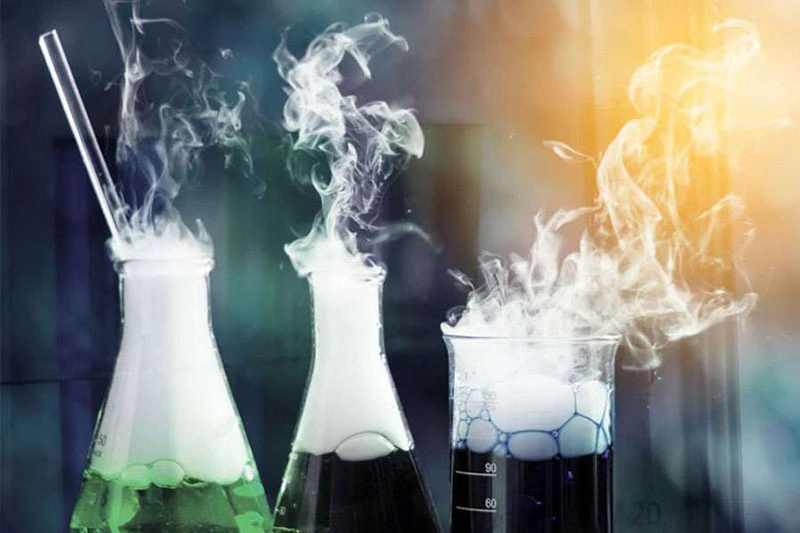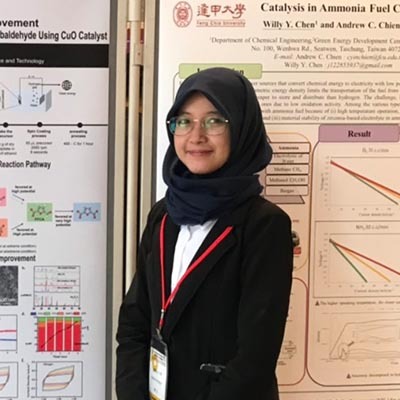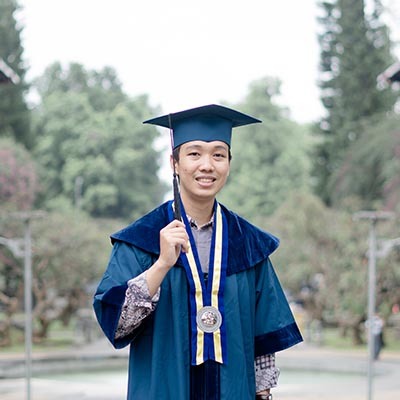
Chemical Reaction Engineering (Teknik Reaksi Kimia)
Kursus ini mencakup kinetika dan mekanisme reaksi kimia, diantaranya topologi teknik reaksi, termodinamika kimia, reaktor batch, kinetika reaksi homogen, kinetika reaksi heterogen. Evaluasi dan desain reaktor ideal kontinu, reaktor aliran sumbat, reaktor tangki ideal, pengenalan reaktor tak ideal.
References:
- Fogler, H. C. (2016). Elements of Chemical Reaction Engineering (5th ed.). Pearson Education.
- Levenspiel, O. (1999). Chemical Reaction Engineering (3rd ed.). John Wiley & Sons, Inc.
Course Fee
Reviews
Schedule
Appointment with tutor(s)
Registration
Mole Balances and Rate Law
This session is an introduction to reaction kinetics, including materials about:
- General Mole Balance Equation
- Batch Reactors and Continous-Flow Reactors
- Industrial Reactors
- Reaction Order and Rate Law
- Reaction Rate Constant
- Stoichiometry of Batch Systems and Flow Systems
Collection and Analysis of Rate Data
This session discuss about the analysis of reaction kinetics. The materials discussed includes:
- Algorithm for Data Analysis
- Batch Reactor Data: Differential Method of Analysis, Integral Method, and Nonlinear Regression
- Initial Rates Method
- Half-Lives Method
- Differential Reactors
Reaction Mechanism, Pathways, Bioreactions, and Bioreactors
This session is an introduction to biological and enzymatic reaction. The materials discussed includes:
- Active Intermediates and Nonelementary Rate Laws
- Enzymatic Reaction Fundamentals
- Inhibition of Enzyme Reactions
- Bioreactors
Catalysis and Catalytic Reactors
This session discuss materials in catalysts and the reactors that uses catalysts, including:
- Catalysts
- Catalytic Reaction Steps
- Synthesizing a Rate Law, Mechanism, and Rate-Limiting Step
- Heterogeneous Data Analysis for Reactor Design
- Catalysts Deactivation
External Diffusion Effects on Heterogeneous Reactions
This session introduces heterogenous reaction with the effect of external diffusion in the surface of catalyst. This session discuss materials:
- Fundamentals of Diffusion
- Binary Diffusion
- External Resistance to Mass Transfer
- Parameter Sensitivity
- The Shrinking Core Model
Diffusion and Reaction
This session discuss the effect of diffusion to the reaction kinetics, which includes:
- Diffusion and Reaction in Spherical Catalyst Pellets
- Internal Effectiveness Factor
- Falsified Kinetics
- Overall Effectiveness Factor
- Estimation of Diffusion and Reaction Limited Regimes
- Mass Transfer and Reaction in a Packed Bed
- Multiphase Reactors and Fluidized Bed Reactors
Conversion and Reactor Sizing
This session is an introduction to reactor sizing based on the reaction kinetics, which includes materials in:
- Definition of Conversion
- Design Equations for Batch Reactiors
- Design Equations for Flow Reactiors
- Reactors in Series
- Definition of Space Time and Space Velocity
Steady-State Isothermal Reactor Design
Steady-state isothremal reactor design session includes materials in:
- Design Structure for Isothermal Reactors
- Design of Batch Reactors
- Design of CSTRs
- Design of Tubular Reactors
- Pressure Drop in Reactors
- Mole Balances of Reactors for Liquid Phase and Gas Phase Reactions
- Microreactors
Multiple Reactions
Multiple reactions can be found in almost every reaction kinetics, which produces side products. This session discuss:
- Parallel Reactions
- Maximizing the Desired Product in Series Reactions
- Algorithm for Solution of Complex Reactions
- Multiple Reactions in a PFR or PBR
- Multiple Reactions in a CSTR
- Membrane Reactors to Improve Selectivity in Multiple Reactions
- Complex Reactions of Ammonia Oxidation
Steady-State Nonisothermal Reactor Design
The materials in steady-state non-isothermal reactor includes:
- Energy Balances
- Adiabatic Operation
- Steady-state Tubular Reactor with Heat Exchange
- Equilibrium Conversion
- CSTR with Heat Effects
- Multiple Steady States
- Nonisothermal Multiple Chemical Reactions
- Radial and Axial Variations in a Tubular Reactor
Distribution of Residence Times for Chemical Reactors
As not every reactor is ideal, the approach to non-ideal reactors is by calculating its residence time distribution. This session will discuss:
- Residence Time Distribution (RTD) Function
- Measurement and Characteristics of the RTD
- RTD in Ideal Reactors
- Reactor Modeling Using the RTD
- Zero-Parameter Models
- RTD and Multiple Reactions
Models for Nonideal Reactors
Non-ideal reactors can be approached to be ideal in some conditions. This session will discuss:
- One-Parameter and Two-Parameter Models
- Tanks-in-Series (T-I-S) Model
- Dispersion Model
- Flow, Reaction, and Dispersion
- Tanks-in-Series Model vs Dispersion Model




